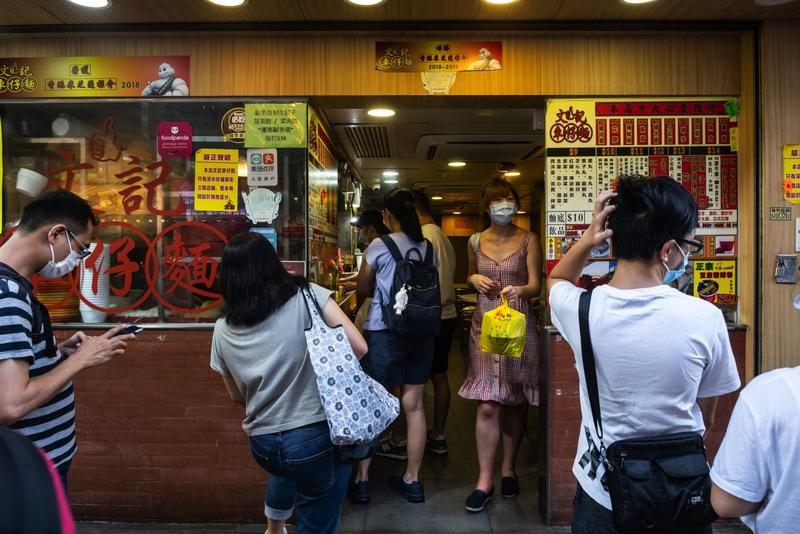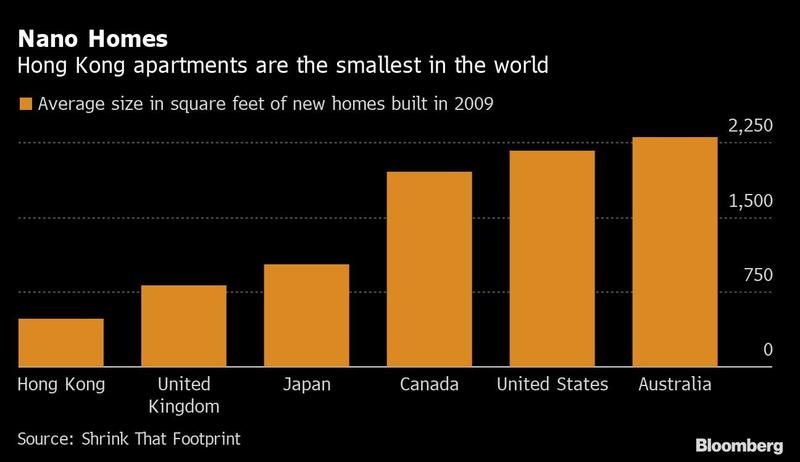 Customers wearing protective face masks wait for their take-away food orders outside a restaurant in Hong Kong on July 24, 2020. (PHOTO/BLOOMBERG)
Customers wearing protective face masks wait for their take-away food orders outside a restaurant in Hong Kong on July 24, 2020. (PHOTO/BLOOMBERG)
Once a coronavirus success story, Hong Kong is facing its worst outbreak yet, and policy makers are realizing how little they can do without making a bad situation worse.
READ MORE: Govt dispels lockdown rumors as HK sees 61 new cases, 14th death
New infections have broken records in nine of the last 20 days. But unlike other global cities, Hong Kong has been reluctant to impose stay-at-home restrictions or close nonessential businesses. Instead, the rules have gotten incrementally tighter, changing by the week. Public gatherings were limited to four people, then two. Dining-in was banned for dinner, then lunch. Masks were required on public transport, then all indoor public spaces, now everywhere outdoors as well.
 Customers wearing protective face masks shop at a wet market in the Sham Shui Po district in Hong Kong, July 24, 2020. (PHOTO/BLOOMBERG)
Customers wearing protective face masks shop at a wet market in the Sham Shui Po district in Hong Kong, July 24, 2020. (PHOTO/BLOOMBERG)
The steady drip of half-measures goes against what the short history of the pandemic has shown to work: broad and stringent lockdowns levied early on the infection curve. In Australia and other places currently fighting flare-ups, officials have quickly reinstated tight restrictions.
A full lockdown? Nobody will say that this isn’t in the arsenal, but logistically it’s a nightmare.
Bernard Chan, Executive Council convener
While still modest compared with outbreaks in many global cities, the up-tick in Hong Kong is particularly troubling, arriving after months with near-zero community transmission and from as yet untraceable origins -- exactly the circumstances in which the tightest restrictions are thought to be the most effective.
On Wednesday, the city reported 113 new local cases, taking the total outbreak to over 3,000.
But going further in Hong Kong could lead to a humanitarian crisis. “It is extremely difficult to enforce a lockdown in Hong Kong,” said Fernando Cheung, a lawmaker with a record of social advocacy. “There are more than 200,000 people living in subdivided units, some without private toilets and others combining their kitchens, toilets, and sleeping places all in one room. To ask people not to step out of that environment for a long period of time is inhumane and impractical.”

With the average apartment running around 500 square feet -- about the size of a New York City studio -- it’s not just the city’s 1.4 million poorest residents living in tiny spaces. Refrigerators are too small, shelf space too limited to stock up on a week’s worth of food at a time. And while ordering groceries online has become standard in other modern cities, it isn’t common or easy in Hong Kong.
The city’s lockdown dilemma has already played out in some developing countries like India, where the measure caused economic devastation and starvation without slowing down the virus
“A full lockdown? Nobody will say that this isn’t in the arsenal, but logistically it’s a nightmare,” Bernard Chan, a top adviser to Chief Executive Carrie Lam Cheng Yuet-ngor, said in an interview. “People still need to go out and buy groceries. And people live in such a tight environment, even going down the lift you’re exposed.”
The challenge facing Hong Kong offers more evidence of the disparate impact of the pandemic along existing social and economic fault lines. From the US to parts of Europe and South America, the most vulnerable populations are bearing the brunt of the health crisis, made worse by dysfunctional institutions and structures.
ALSO READ: Hong Kong CE refutes malicious rumors about city curfew
The city’s lockdown dilemma has already played out in some developing countries like India, where the measure caused economic devastation and starvation without slowing down the virus. The country abandoned its lockdown last month and cases have accelerated to nearly 50,000 a day.
Whether or not Hong Kong officials tighten restrictions further, time is running out on the current strategy. Some 80 percent of isolation beds and wards in public hospitals are full, and the city’s testing capacity is limited. The government is trying to add capacity with private testing labs in Hong Kong and the Chinese mainland, and preparing community isolation centers for patients in stable condition.
Meanwhile, the city is already in deep recession, rocked first by months of anti-government protests, then by the pandemic. The economy shrank an unprecedented 9 percent in the second quarter, the fourth straight quarter of contraction, while the unemployment rate has more than doubled to 6.2 percent in the past 12 months, reaching a 15-year high.
In its current state of political and economic fragility, Hong Kong can’t impose heavy lockdowns to eliminate all cases the way the mainland does, said Lam Ching Choi, a medical doctor and adviser to Lam. Instead, the measures have to balance personal and economic needs with public health outcomes, and allow the city to remain an open, international financial center.
“Our trust level is maybe the lowest compared with western countries because of the social events that happened this year,” Lam said in an interview. “So we must listen to our people and not affect their work, their daily lives – like shopping or visiting their family members.”


